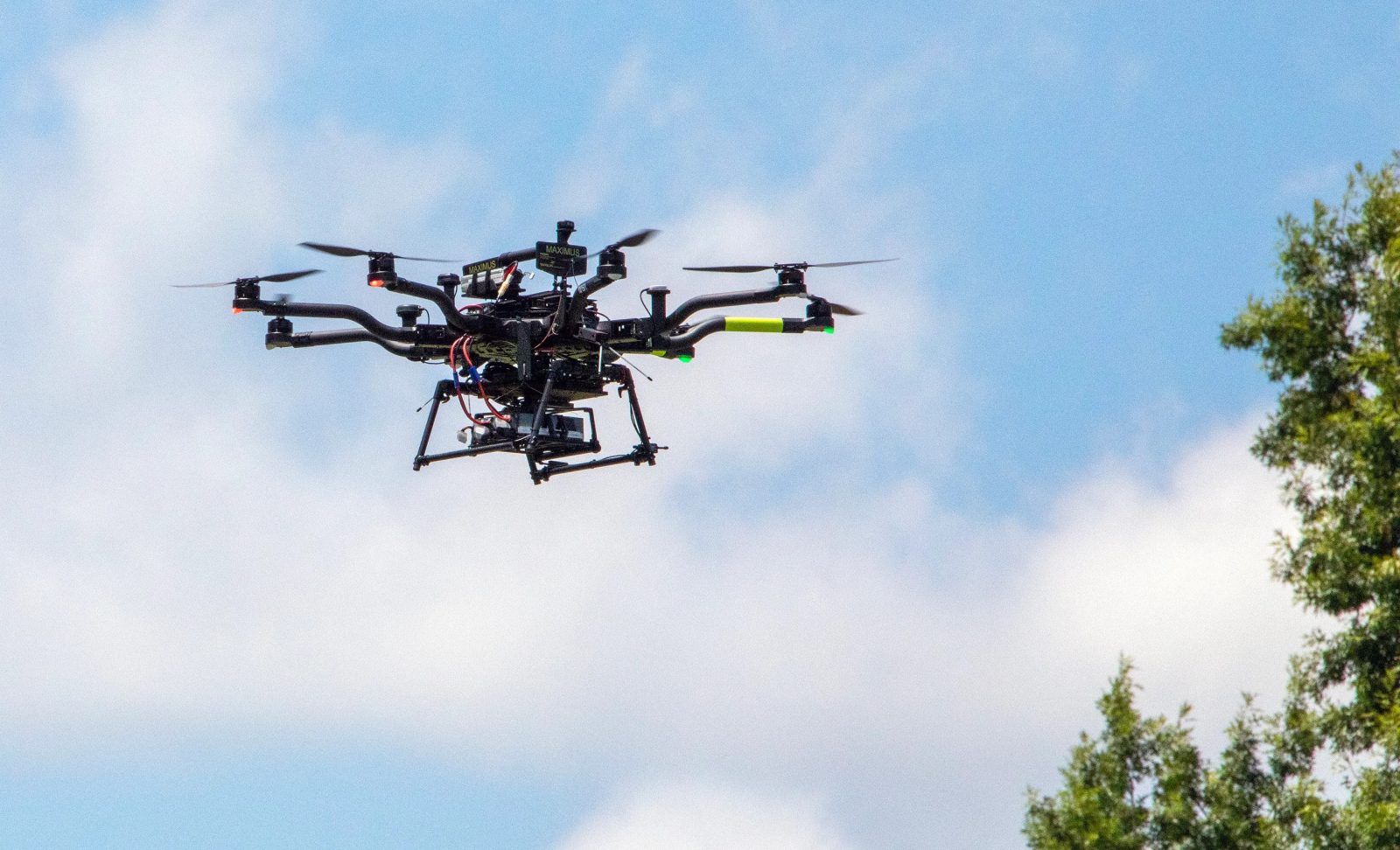
To understand how uncrewed vehicles avoid each other and other obstacles, researchers at NASA recently flew multiple drones beyond visual line of sight (BVLOS). The test is being seen as an important step towards advancing self-flying capabilities for air taxis.
To conduct the test, the team at NASA’s Langley Research Center in Hampton, Virginia, used Freefly Systems’ (now discontinued) Alta 8 drones. The drones flew around obstacles and each other during takeoff, completed their planned route, and landed successfully. All this happened autonomously through the software loaded onto the drones, without any pilot controlling the flight.
Lou Glaab, branch head for the aeronautics systems engineering branch at NASA Langley, is quick to point out that the experiment required specific approval from the Federal Aviation Administration (FAA). “Flying the vehicles beyond visual line of sight, where neither the vehicle nor the airspace is monitored using direct human observation, demonstrates years of research into automation and safety systems,” says Glaab.
Also read: Drone pilot fined over $1,100 for almost crashing into Fatboy Slim
NASA also is testing elements of automation technology using helicopters. Both drones and helicopters are safer and more cost-effective to test than larger air taxis meant to carry passengers. But tests like this are crucial for Advanced Air Mobility (AAM), where drones and air taxis will be operating simultaneously on a routine basis.
“When you have multiple vehicles, all coming and going from a vertiport that is located adjacent to an airport or deep within a community, we have to ensure the automation technologies of these vehicles are capable of safely handling a high volume of air traffic in a busy area,” says Glaab.
NASA says any new technology created during this “High Density Vertiplex” project will be made public so that drone and air taxi manufacturers can access the software while designing their vehicles.
One of these technologies is ICAROUS (Integrated Configurable Architecture for Reliable Operations of Unmanned Systems), which provides an autonomous detect-and-avoid function and is part of the overall system to maintain “well clear” from other air traffic. Another technology is called Safe2Ditch system, which allows the vehicle to observe the ground below and make an autonomous decision on the safest place to land during an in-flight emergency.
“NASA’s ability to transfer these technologies will significantly benefit the industry,” says Jake Schaefer, flight operations lead for the project. “By conducting flight tests within the national airspace, in close proximity to airports and an urban environment, we are able to test technologies and procedures in a controlled but relevant environment for future AAM vehicles.”
Read more: Drone maker DJI confirms shutting down education division in US
FTC: We use income earning auto affiliate links. More.





Comments